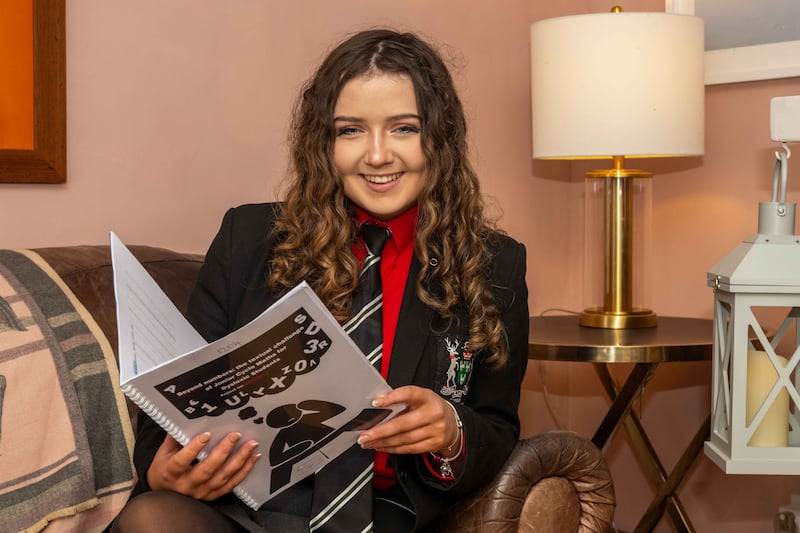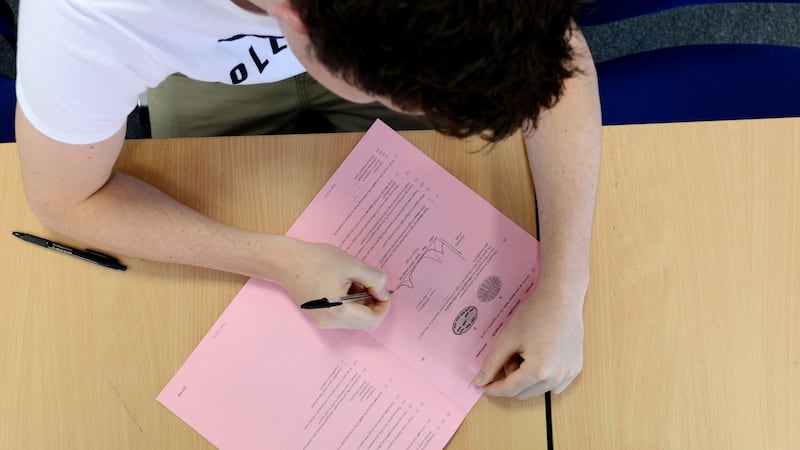When do you ever use algebra in day-to-day life? Are students just learning maths by rote, instead of developing real understanding?
It was questions like these that led to the implementation of a new maths curriculum at junior and senior cycle. Of course, algebra has a proven value in helping learners develop abstract and logical thinking but, when Project Maths was introduced in 2010, it aimed to ensure that students developed that deeper understanding of real-world maths applications.
So, instead of just giving students raw maths, they were provided with a real-world context for many of the problems. This meant that the number of words on the paper increased, placing greater demands on students with literacy difficulties.
Over more than a decade, teachers have regularly raised concerns about the wordiness of the paper. However, there was very little scientific investigation into how the increase in words on the paper affected students with literacy difficulties, including dyslexia.
RM Block
Until now, that is.
This year at the BT Young Scientist Exhibition, Philippa McIntosh, a transition year student at Bandon Grammar School, took the runner-up prize for Beyond Numbers, her investigation into readability issues for dyslexic students sitting the Junior Cycle maths exam papers.
“In primary school, I had a positive experience with maths,” McIntosh says. “I never found it particularly challenging as a subject, although even simple word problems took me slightly longer to figure out.
“However, that sort of attitude towards it began to change in secondary school. It was so frustrating to see my classmates, who I knew had the same raw maths abilities as I did, doing far better than I was, solely because I had misinterpreted the questions in class tests.
“On almost every single test the same comment was always left by my teacher: ‘reread your questions’. This was unbelievably discouraging because by the time I had reread the questions multiple times, I would always run out of time in the test. In summary: I find actual maths easy — but the complex language that it usually sits on can confuse me. It can take me multiple reading attempts to extract the actual underlying maths.”
When McIntosh sat her exam in 2023, she went into the hall believing she was well prepared.
“But I was left stunned by the linguistic complexity of each of the questions. It was as if I had to navigate through a word puzzle before I could even understand what I was being asked.”
After the exam, her maths teacher asked how the paper had gone.
“I told her that I didn’t understand what the questions were asking me to do,” McIntosh says. “Understanding this, she then broke the questions down for me into simpler terms. That’s when I understood exactly how to solve each question. That’s when I began to realise that maybe I wasn’t the problem, but that my dyslexia was.”
So, for the BT Young Scientist Exhibition, McIntosh set out to investigate whether dyslexic students are at a disadvantage. She used standard readability formulas to see the level of reading challenges on previous papers, finding a high level of passive sentences (where, for example, “the food was eaten” instead of “she ate the food”). Passive sentences are less accessible to people with dyslexia; yet on one paper alone, there were 19 of them.
McIntosh created her own test, writing three questions with similar wording to those on previous papers. Some 100 students took part in this experiment. McIntosh found that the total time taken for dyslexic students was double that of non-dyslexic students. Through rigorous and careful use of data, including U-tests and T-tests, she showed that the maths was not the problem: the words were.
“Dyslexic students are at a significant disadvantage,” she says. “In the HSE, there are simple language guidelines and readability tests [to ensure wider accessibility]. Subjects such as English already have exemptions for diagnosed dyslexics — but the failure to recognise that English is heavily leaned on throughout other subjects too [such as maths] is a big miss.”
She adds: “There are standard recognised readability algorithms to mark the complexity of language phrases — this should be used as part of the exam preparation to ensure that any other subject does not become an English language exam.”
McIntosh’s project only looked at the Junior Cycle exams, but greater challenges may lie ahead.
“I am coming up to my Leaving Cert and this is an even bigger problem — as it will impact my future education and career choices,” she says.
“I would like to entertain a possible career in Stem — though I feel that dyslexics are placed at a clear disadvantage due to the prevalent use of complex language in maths, which forms much of the foundation of Stem.”
Dyslexia Ireland says McIntosh’s project shows a need for reform and they are advocating for change. She is due to present her project findings at the next meeting of the Irish Maths Teachers Association and says she has received lots of support and encouragement, including from other dyslexic students and their families.
For the State Examinations Commission, this appears to pose a conundrum. Project Maths is seen to have increased the accessibility of the subject for the majority of students, but it appears to have significantly disadvantaged a relatively large minority: estimates suggest that at least 10 per cent of the population may be dyslexic, depending on the definition used.
In a statement, the commission congratulated McIntosh on her work and her success.
“She has produced a report that is very interesting, well-researched, and relevant, regarding the reading demands of Junior Cycle mathematics examination papers, with a particular focus on students with dyslexia,” said a spokesperson.
The commission said that this issue has been raised before.
“It has been characterised as an unforeseen difficulty [but] the course committees were fully aware that [the changes] would result in an increased reading load in the exams,” a spokesperson said.
The commission said these changes, nonetheless, were considered necessary in the development of new skills, but that exam-setters are trained to ensure the papers have a high readability level, and that readability features interact with other aspects of question clarity and demand in complex ways including, sometimes, the use of more complex of technical words.

McIntosh, meanwhile, wants more time provided for dyslexic students, as well as improvements in readability.
Ultimately, McIntosh and Dyslexia Ireland may have a battle on their hands: the commission says that it offers reasonable accommodation for students who have learning, physical or other difficulties and it is satisfied that the language used on the papers is appropriate.
Should dyslexic students have extra time in exams?
The Dyslexia Association of Ireland says dyslexic students face significant challenges with reading and comprehension and often run out of time in exams.
Its petition calling for dyslexic students to be given extra time to complete their Junior Cycle and Leaving Cert exams had attracted about 30,000 signatures as of last week.
Ireland, it says, is an outlier in not providing extra exam time for such students at second level given that it is an established option in countries such as France, Italy and the UK.
It is also standard across most third-level institutions in Ireland.
In response to the petition, the commission says an extensive range of supports is provided to students with special educational needs. The measures include — subject to eligibility — a reader or reading assistant, use of a word processor or recording devices, access to a scribe or a waiver from the assessment of spelling or grammar.
Almost 25,000 students — or one in five candidates — had access to these supports in last year’s exams.
It says there is a waiver from spelling, grammar and punctuation for candidates with learning difficulties, which is understood to be “unique to the Irish examinations system” and that 20 minutes have been added per exam paper in Irish, English, history and geography to make the time element less critical.
In a statement last year, the commission said its reasonable accommodations scheme continued to be subject to a “process of ongoing review and improvement”.

- Follow The Irish Times education section on Facebook and X (Twitter) and stay up to date




















